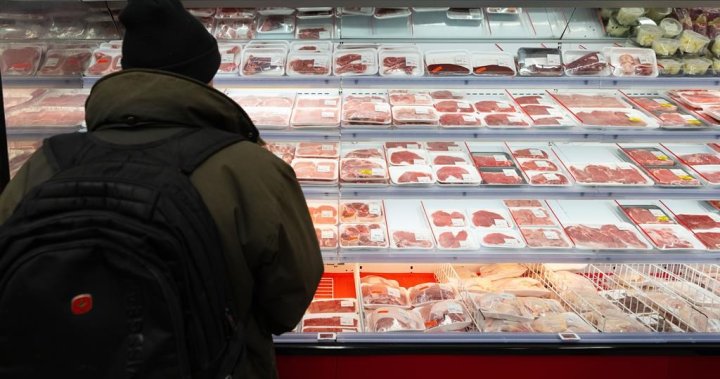This class-action lawsuit, filed in a Vancouver Federal Court on January 9, 2025, accuses major Canadian grocery chains Loblaw, Walmart Canada, and Sobeys of deceptive pricing practices regarding meat products. The lawsuit’s central claim revolves around the alleged inclusion of packaging weight in the calculation of meat prices, effectively charging consumers for the weight of the container along with the product itself. Lead plaintiff Carrie Corrall, a British Columbia resident who regularly purchases meat for her family, contends that this practice violates both federal and provincial regulations and constitutes a form of consumer fraud. The lawsuit seeks not only compensation for the alleged overcharges but also punitive damages, highlighting the alleged deceptive practices during a period of high inflation when grocers have publicly pledged to maintain affordable prices.
The lawsuit underscores the significant financial impact of this alleged misrepresentation, claiming that Canadians have been consistently overpaying for meat products purchased at these grocery chains. The timing of the legal action, coinciding with a period of escalating food prices and public discourse about affordability, adds a layer of urgency to the allegations. Corrall argues that this practice is particularly egregious given the current economic climate and the public commitments made by these grocery giants to keep prices low for consumers. The lawsuit emphasizes the contrast between the public pronouncements of price control and the alleged covert overcharging through deceptive packaging practices.
The legal action follows a recent investigative report by CBC News, which brought these alleged pricing practices to light. Following the report, Loblaw issued a statement acknowledging discrepancies in meat product pricing in certain western Canadian stores. The company attributed the errors to a transition to more environmentally friendly packaging and claimed they were rectified upon discovery. They also emphasized their internal processes for ensuring accurate pricing while conceding the possibility of occasional operational errors. However, the lawsuit alleges that these practices are not isolated incidents but a systematic and deliberate strategy to inflate prices.
The class-action lawsuit aims to represent a broad class of consumers affected by these alleged pricing practices. The certification of the class action by a judge is a crucial next step in the legal proceedings. If certified, the lawsuit would allow other consumers to join the action and collectively seek redress for the alleged overcharges. The lawsuit’s success hinges on demonstrating that the alleged practices were widespread and not isolated incidents, as claimed by Loblaw. The lawsuit’s focus on punitive damages reflects the seriousness of the allegations and the perceived breach of consumer trust.
The allegations made in the lawsuit have not yet been proven in court, and the defendant grocery chains haven’t yet publicly commented on the specifics of the lawsuit. The lawsuit emphasizes that these pricing practices constitute a significant financial burden on consumers, particularly in the current climate of rising food prices and inflation. The legal action seeks to hold the grocery chains accountable for their alleged deceptive pricing practices and secure compensation for consumers who have been allegedly overcharged. The outcome of the lawsuit has implications for consumer protection and the transparency of pricing practices in the Canadian grocery industry.
The core issue of the lawsuit revolves around the alleged misrepresentation of meat product weights and the inclusion of packaging weight in price calculations. This practice, according to the lawsuit, effectively inflates the price consumers pay for meat, as they are charged for the weight of the container along with the product itself. While Loblaw has attributed the discrepancies to an operational error during a packaging transition, the lawsuit characterizes the practice as a deliberate strategy to increase profits at the expense of consumers. The legal battle will likely center on determining whether these practices were intentional or unintentional and assessing the overall impact on consumers. The outcome of the lawsuit could significantly influence pricing transparency and consumer protection within the Canadian grocery sector.

